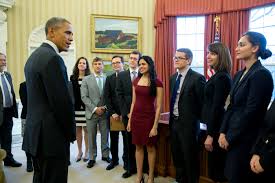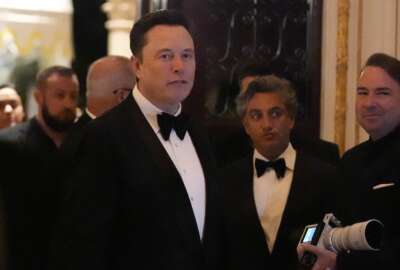Like that federal website? It may be good behavioral science at work
A quiet little team deep in OSTP is blocking and tackling to make government more effective, one yard at a time.
The White House is trying to get in your head. You as a federal employee, and also citizens. Contractors too. If you ever indulged the thought you might be a rat in a maze, it turns out you sort of are. This odd but compelling report from the Social and Behavioral Sciences Team, or SBST, details a government trying to improve efficiency and performance by measuring human behavior.

All right, it’s not that sinister. But the title of the team made me think of a hospital wing where they lock the doors. Actually, it’s part of the Office of Science and Technology Policy, which operates the Committee on Technology. The SBST is headed by Maya Shankar, who works for Technology Committee Chairman Tom Kalil, who works for OSTP Chief John Holdren.
The year-old subcommittee said it spent its first year experimenting with ways to make it easier for the above-mentioned groups to interact online with federal programs. The theory is simple. By testing alternate ways of doing the same thing, you can come up with one optimal solution. The way you present information to people, the way you format a website or form, the whole context can affect how people react, what actions they take, whether they “get it.”
So, for example, the team tried nine email wordings and sent one of each to some 720,000 service members who had not enrolled in the federal Thrift Savings Plan. “The most effective message nearly doubled the rate at which Servicemembers signed up for TSP,” SBST said. It amounted to 4,930 people. Not a huge number, but as one professor used to say, “That’s better than a jab in the eye with a sharp object.”

In another case, the General Services Administration changed the interface on a website where contractors self-report sales figures. GSA added a signature box in which the visitor confirmed the accuracy of the numbers. “Because vendors pay to the Government a small fee based on those sales reports, introducing this box led to an additional — $1.59 million in fees collected within a single quarter,” the subcommittee reported. It won’t end the federal deficit, but GSA liked the results enough to make the signature box a permanent feature.
The SBST is careful about over-stating the results from behavioral analysis. More precisely, of overstating the types of results behavioral analysis can produce. So if the results look like small potatoes, they are. Here’s another. The team sent email reminders to some 100,000 student loan borrowers who’d been late on their first payment. The percentage of those making a payment within a week rose a third to 3.5 percent. All right, so it’s a $1 trillion liability, but you gotta start somewhere.
The team also pointed out, because the innovations cost next to nothing, they provide large returns on investment. In the SBST’s words, “When behavioral insights — research findings from behavioral economics and psychology about how people make decisions and act on them — are brought into policy, the returns are significant.”
Enough for the White House, anyhow. Earlier this month, President Barack Obama signed an executive order that blessed the SBST into permanence and ordered federal agencies to identify “policies, programs, and operations” that might benefit from applying behavioral science. The SBST moved from behavioral science experiments to setting policy for how every one else does it. That itself will require some behavioral science, pushing the technique down through the federal bureaucracy.
Copyright © 2024 Federal News Network. All rights reserved. This website is not intended for users located within the European Economic Area.
Tom Temin is host of the Federal Drive and has been providing insight on federal technology and management issues for more than 30 years.
Follow @tteminWFED







